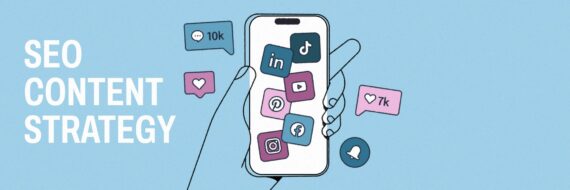Ever wondered why some websites consistently rank high in search results while others struggle for visibility? The difference is SEO content.
Creating content optimized for SEO attracts the right traffic, keeps people engaged and helps your website pages climb the search rankings.
In this guide, we’ll break down seven essential types of SEO content and show how each one supports a stronger, more balanced content strategy.
Key takeaways
- Diversify your formats. Use a mix of blogs, guides, videos and visuals; each plays a unique role in attracting and engaging your audience.
- Build a balanced SEO content strategy. Combine long-form content for depth with shorter posts and visuals for quick insight, all optimized for relevant keywords.
- Prioritize engagement. Interactive tools, videos and how-to guides keep people on your site longer and show Google your content delivers value.
SEO and content marketing
People consume content in different ways, like long reads, short blogs, videos and interactive tools, to name a few. Before diving into the types of SEO content, it helps to understand the relationship between SEO and content marketing.
- SEO improves visibility in search results through keyword targeting and on-page/off-page optimization.
- Content marketing creates relevant, valuable material that attracts and engages your audience.
SEO-friendly content combines both. Valuable content that generates leads by captivating your audience and potential customers while being optimized to draw organic traffic from search engines.
To create an effective SEO content strategy, be conscious of where your audience is in your funnel and create SEO content to meet their needs in each phase:
- TOFU (Top of Funnel): Build awareness with educational content
- MOFU (Middle of Funnel): Help users compare options and build trust
- BOFU (Bottom of Funnel): Convert with product-focused or testimonial content
Let’s start with the written SEO content formats.
🎬 Learn what Slickplan can do!
We filmed a short video to show you exactly how to use Slickplan
1. Long-form articles
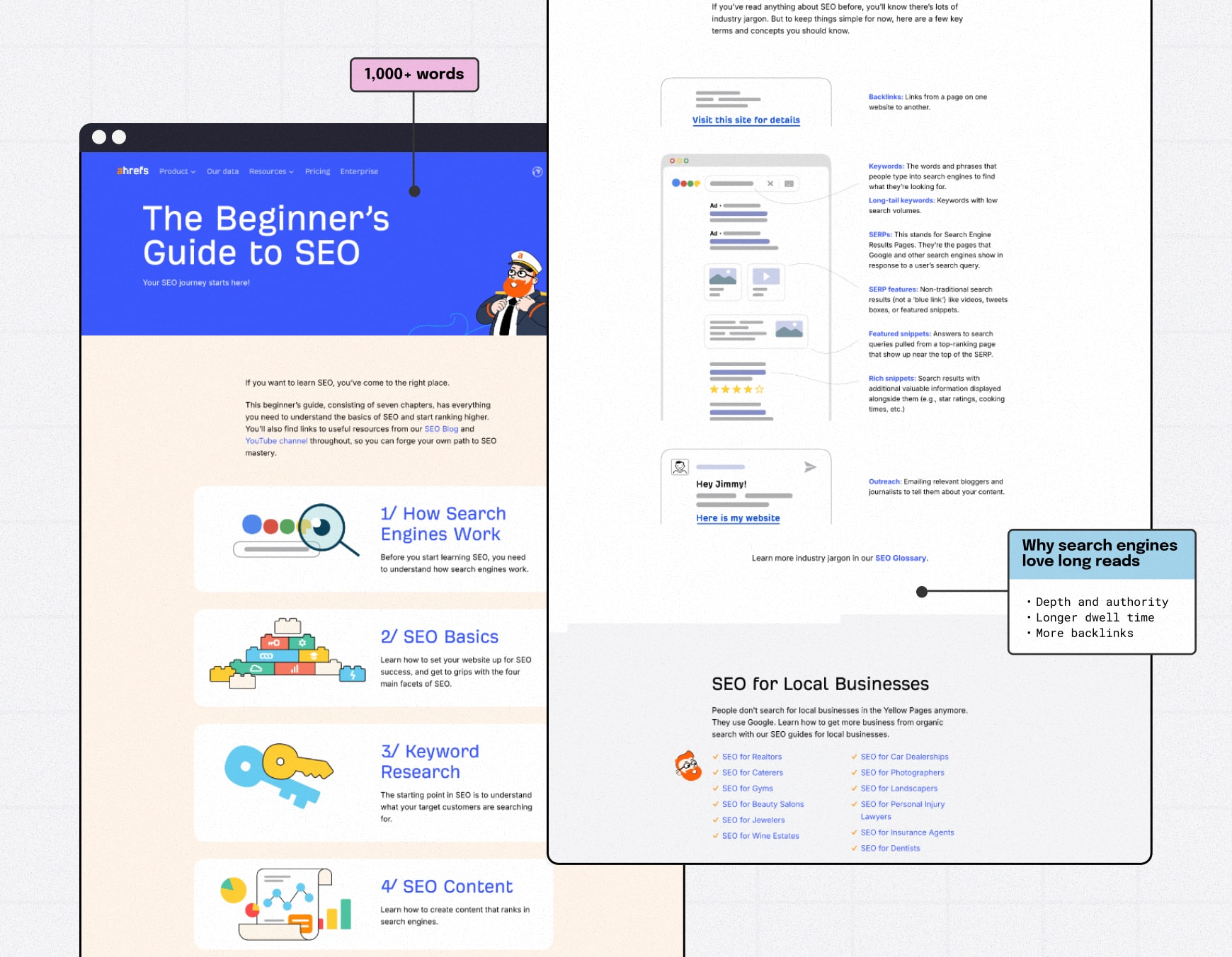
Example: Ahrefs’ Beginner’s Guide to SEO — a seven-chapter, 1,000-plus-word resource covering everything from keyword research to technical SEO — demonstrates how in-depth content can rank, retain readers, and earn backlinks.
Long-form content — typically 1,000+ words, like this article — lets you dive deep into a topic, provide thorough insights and boost your visibility in Google search results.
Why Google likes long reads:
Detailed, comprehensive answers satisfy search intent better than short summaries. The more value you deliver around a keyword (without stuffing), the stronger your authority and ranking potential.
Long-form content keeps visitors on your site longer, consolidating all information in a single location while positioning your brand as a credible authority. If you’re looking to create thought leadership in an area, long-form content gives you the runway.
How to create valuable long-form content
To visualize what goes into a strong long-form article, here’s how research, data, and expert insight come together to create content that earns rankings and backlinks.

The deep dive is loved by search engines and users alike and makes for a potent SEO content tool but creating high-quality long-form content involves more than just adding more words:
- Do your homework. Research your topic thoroughly and organize insights into a clear, logical flow.
- Go deep, not wide. Focus on valuable information that genuinely helps readers.
- Show expertise. Use data, examples or expert quotes to establish authority.
- Encourage engagement. Add visuals, clear headers for each blog section and summaries to make it easier to read.
- Build backlinks naturally. High-value resources attract citations and shares.
💡Slick tip: Use long-tail keywords, which are specific phrases that match user intent. They’re less competitive and make up nearly 70% of all searches, improving both relevance and rankings.
2. Short-form SEO content

Where long-form content dives deep into a subject, short-form website content that’s less than 1,000 words provides focused insights that are easier to digest.
Benefits of shorter SEO content
- Quick to consume
- Provides concise information
- Better engages readers with shorter attention spans
- Has the potential to rank for low-competition keywords
Examples: Product pages, blogs and landing pages.
How to craft short-form content

To get the best output, follow these best practices for shorter content:
- Identify the takeaway early. Know the one message or answer your target audience needs.
- Use a brand-aligned tone. Keep sentences short, natural and with simple language to help people connect.
- Add visual cues like images, GIFs or bullets to make written SEO content easier to scan and more engaging.
- Optimize SEO essentials. Write strong headings, include accurate metadata and compress images with descriptive alt text for better performance in search engines (relevant for long-form content too).
Shorter blog content can still build thought leadership when it’s focused, well-written and designed to drive traffic or generate leads. Just one tight blog article that answers a question clearly can help you rank higher and attract more traffic.
3. Pillar pages and topic clusters

Example: Our SEO Content Planning pillar page serves as the central hub, linking to related articles while those same posts point back to it — creating a connected topic cluster that strengthens rankings across the group.
A pillar page is an authoritative, long-form resource that covers every angle of a key topic and links to related supporting articles. By organizing content this way, pillar pages (also known as cornerstone content) form the foundation of an SEO strategy, with topic clusters branching off to cover subtopics in depth. It’s the anchor point that ties your SEO and content marketing together.
Why pillar pages work
- Boost overall SEO performance. When one page performs well, linked content tends to benefit too.
- Attract backlinks. Comprehensive, high-quality content naturally earns citations from other websites.
- Improve navigation. Organized internal linking helps users explore and keeps them on your website longer.
- Offer a broad overview. Great cornerstone content summarizes a full topic, then links to specialized pieces for in-depth information.
How to build an effective pillar page
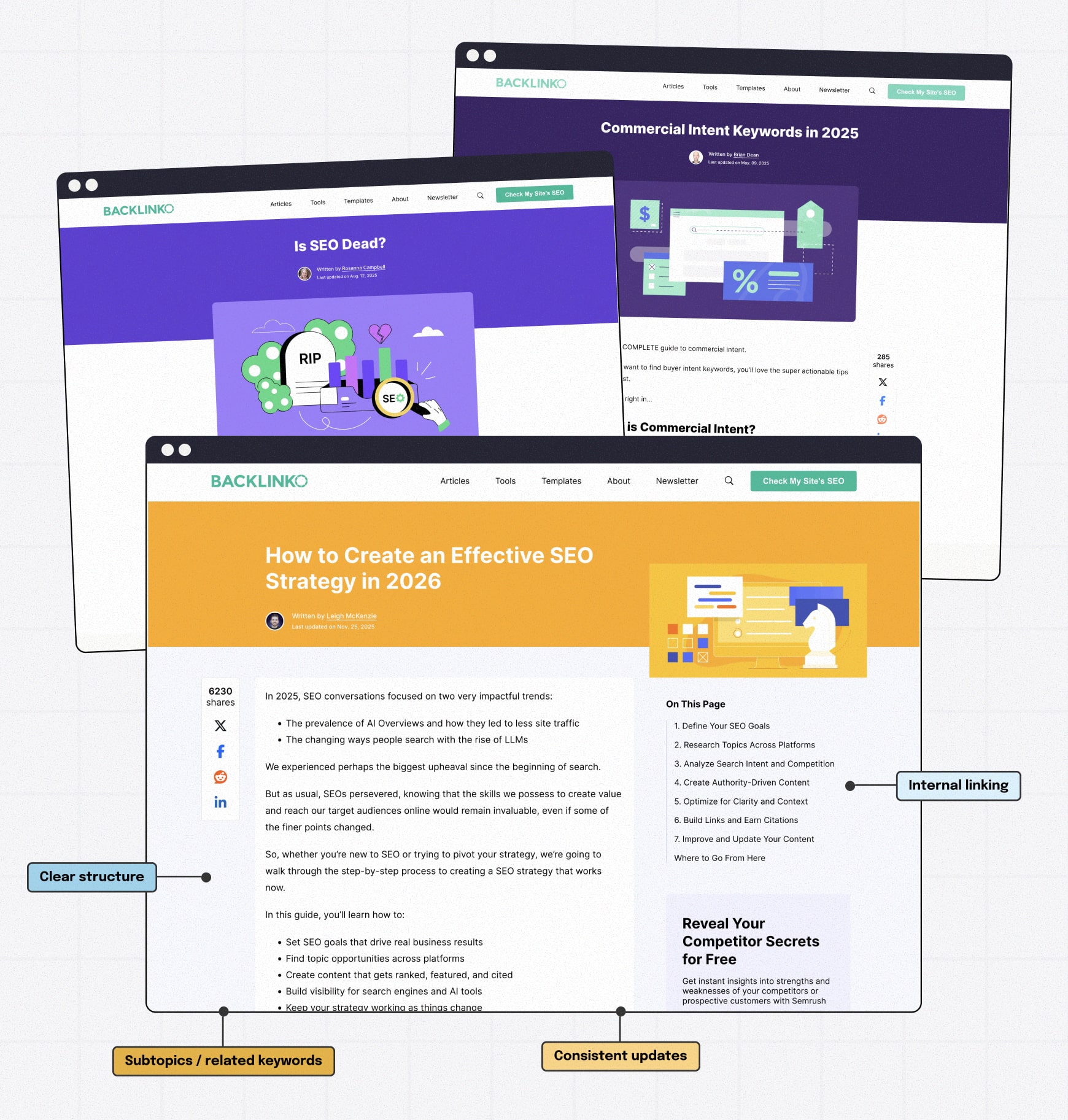
To create a high-performing pillar page, do this:
- Use clear, understandable structure. Keep it user-friendly and easy to scan.
- Make it a landing page. Build pillars around vital topics for your company and target high-value keywords that other pages will support.
- Focus on depth and relevance. Deliver high-quality content that answers broad questions and connects to subtopics.
- Add internal linking. Take a multi-keyword approach using related pages for more coverage.
- Be consistent. Update regularly and refine to maintain SEO value and accuracy.
The goal is to provide a comprehensive resource that enhances search ranking and user experience, driving more traffic, credibility and stronger engagement across the cluster.
4. How-to guides and tutorials

How-to guides give your target audience practical, step-by-step help. Whether it’s using a product, solving a problem or learning a new process. Clear instruction builds trust, reduces frustration and establishes your brand’s authority.
Why how-to content works
Guides are great content for SEO because they speak to a higher intent part of your audience who are looking for immediate answers and likely in the "awareness" or "consideration" stage of their buyer journey.
- Provides in-depth, solution-focused information. Detailed process breakdowns help readers fully understand and apply what they learn.
- Improves visibility in search engines. Precise, structured guides are often featured in rich snippets or "People also ask" boxes in search results.
- Builds authority and trust. Useful, quality content for SEO positions you as a go-to resource.
- Drives engagement and leads. These can become lead-gen-focused posts or downloadable lead magnets that help generate leads.
So, how do you make sure that your guide is easily understood by users?
How to create content that teaches clearly
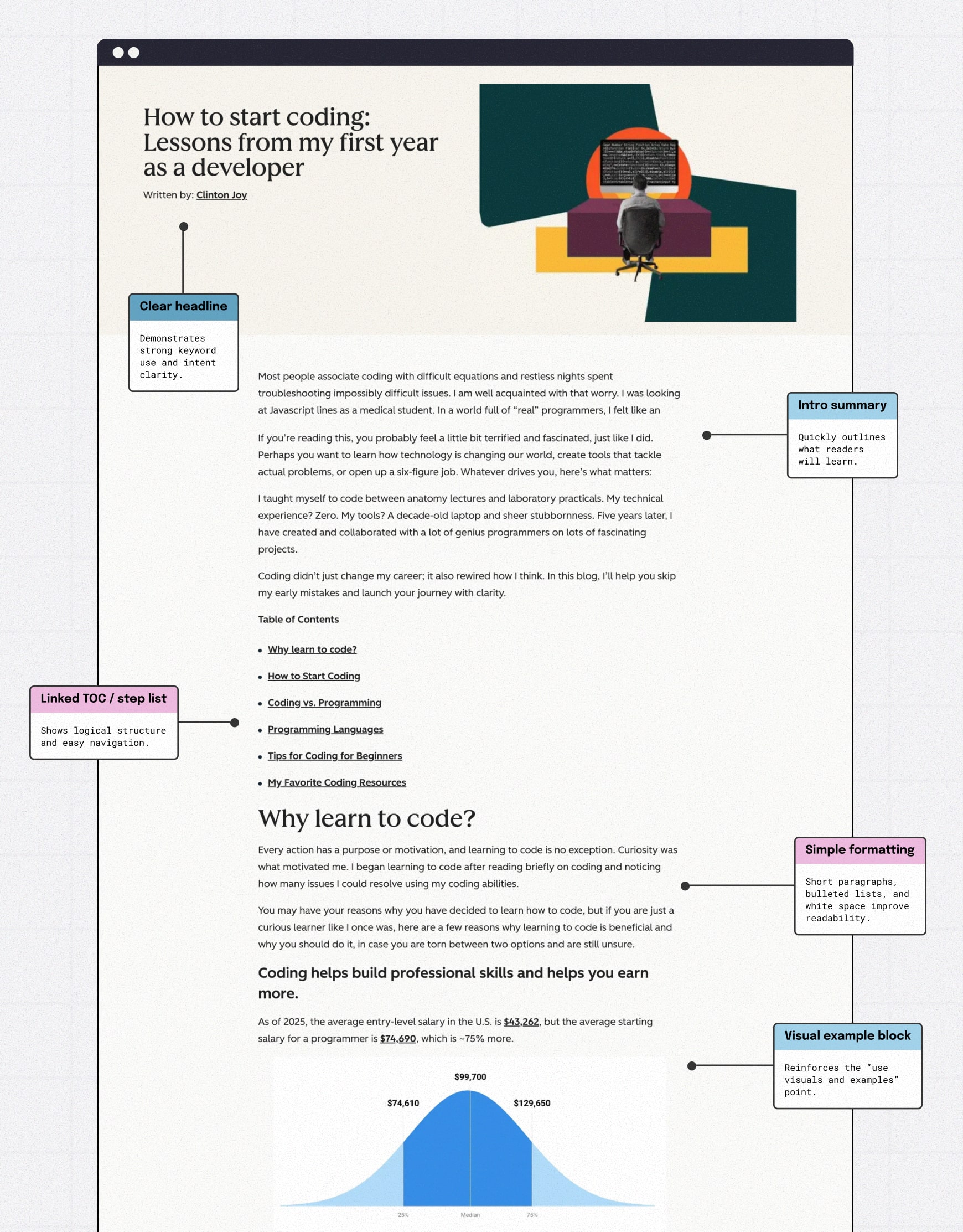
To create SEO content that’s both helpful and optimized:
- Know your audience. Research their pain points, goals and preferred learning style.
- Address customer pain points. Identify where users struggle and guide them to success.
- Answer common questions. Anticipate the queries people search for and provide clear, direct answers within your guide.
- Stay organized. Structure your content into logical, sequential steps.
- Use visuals and examples. Add screenshots, graphics or short clips for clarity and engagement.
- Make it straightforward. Simple formatting, basic language and clear section headers make reading easier.
- Optimize naturally. Use relevant keywords from your keyword research while maintaining a friendly, conversational tone.
The best guides combine expertise with empathy, helping users accomplish something while building SEO value and creating trust.
5. Interactive content

Interactive content turns passive readers into active participants. Instead of just scrolling, your target audience can click, calculate, explore or respond. Keeping them engaged and on your website longer.
From quizzes and calculators to interactive maps and webinars, these new formats provide unique ways to engage your audience and boost your SEO performance.
Examples: Charles Schwab’s retirement calculator, Buzzfeed quizzes and Roadtrippers interactive trip planning map.
Why interactive content matters
It’s not just about having a fun gimmick; this is one of the SEO content types that can turn searchers into potential customers.
- Drives engagement. This content format is built to hold attention and increase dwell time; both positive signals for search engines.
- Encourages sharing. People love to compare results or show what they’ve created.
- Generates leads. Tools that provide results (like calculators or quizzes) are a perfect lead magnet for collecting contact info.
- Creates sales opportunities. Interactive tools help qualify prospects, guide them toward products and support product sales by personalizing recommendations.
- Improves UX and brand loyalty. Interactive experiences make your site more user-friendly, memorable and, yes, fun too 😉
How to design engaging interactive content

This requires a blend of creativity, strategic planning and understanding of user behavior. The core steps to follow:
- Define the goal. Know what action you want users to take, from email sign-ups to product sales.
- Choose the right medium. Match the content format to your audience’s goal. This is why a retirement calculator is a great interactive tool for an investment platform.
- Design for usability. Keep it intuitive, mobile-friendly and visually clear.
- Test and optimize. Track engagement, time on page and conversions to refine performance.
💡Slick tip: Everything you create must serve a clear purpose, whether it’s to educate, qualify leads or move visitors toward conversion. Fun is great, but function wins.
6. Videos and visual content
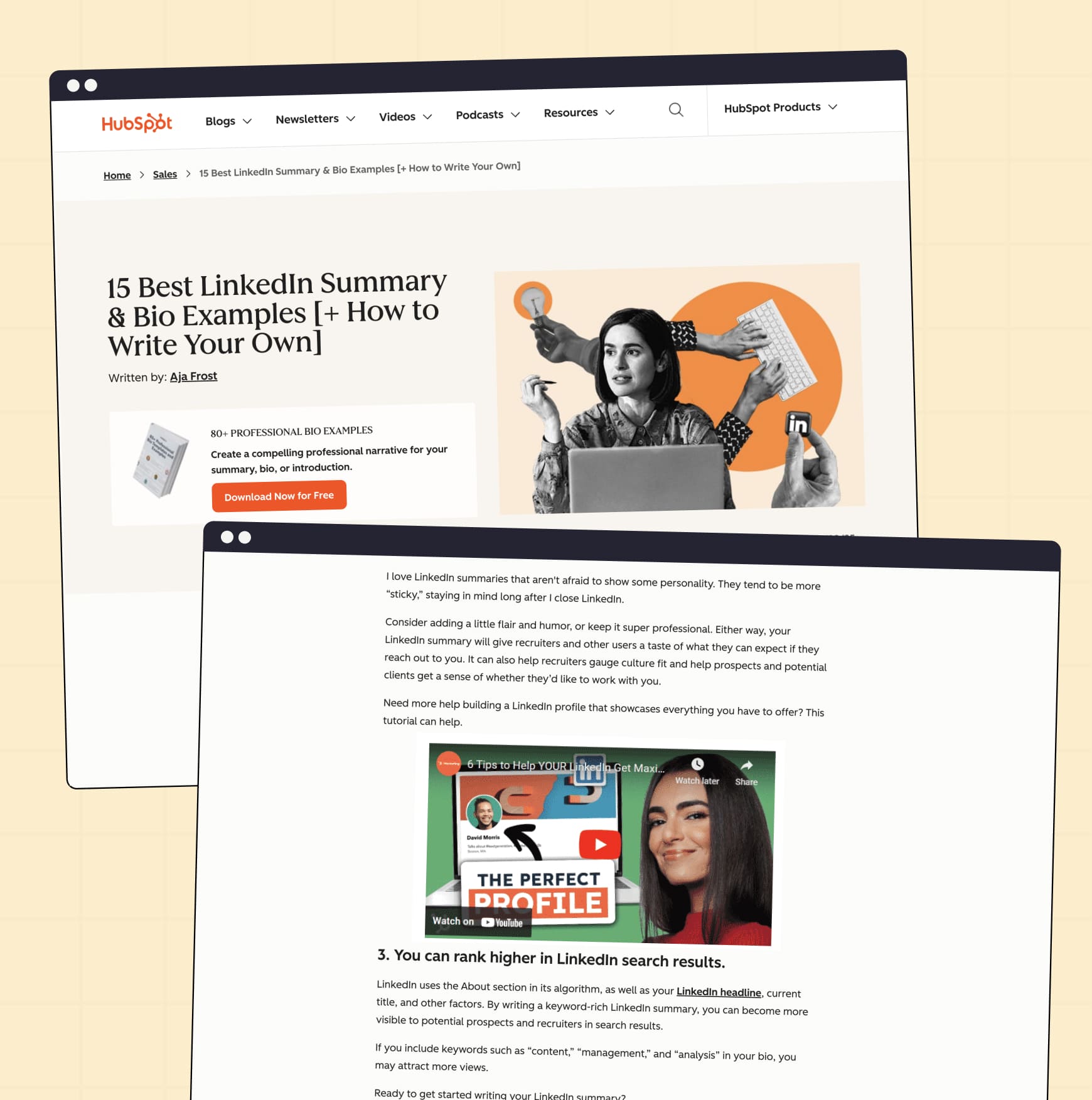
Videos and visual content are key parts of modern SEO content. They grab attention, simplify complex topics and make your pages more dynamic. All of which help search performance.
89% of businesses now use video as a content marketing tool. Why? Because it works. Visuals increase engagement, keep visitors on your website longer and send strong quality signals to search engines.
Written content is fantastic, but you’re missing out if you’re not incorporating video.
How to create shareable visual content
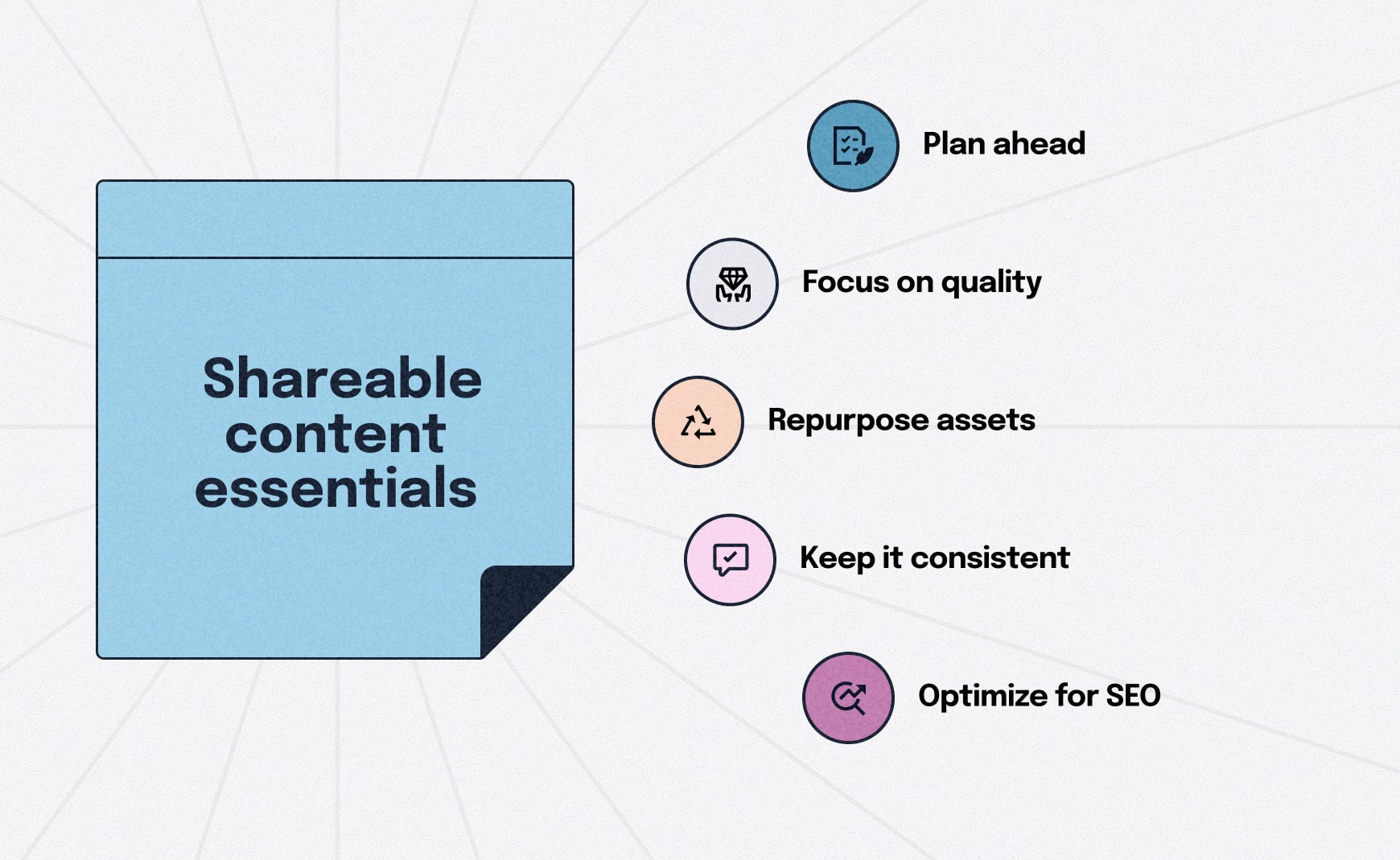
Aside from having a keen eye for aesthetics, consider the following when creating your visual content strategy:
- Plan ahead. Know your audience and then outline the purpose of each piece — awareness, education or conversion.
- Focus on quality. Clear, well-edited visuals signal reliability to users and search engines alike.
- Repurpose assets. Turn long-form content into short clips, carousels or infographics.
- Keep it consistent. Use a unified visual style to strengthen your brand identity; this pays off over time.
- Optimize for SEO. Include keyword-rich titles, filenames and schema markup for better indexing.
💡Slick tip: Optimize your YouTube channel. It’s the second-largest search engine, so well-crafted, high-value videos can boost your visibility massively and lead to increased traffic.
7. Local SEO content
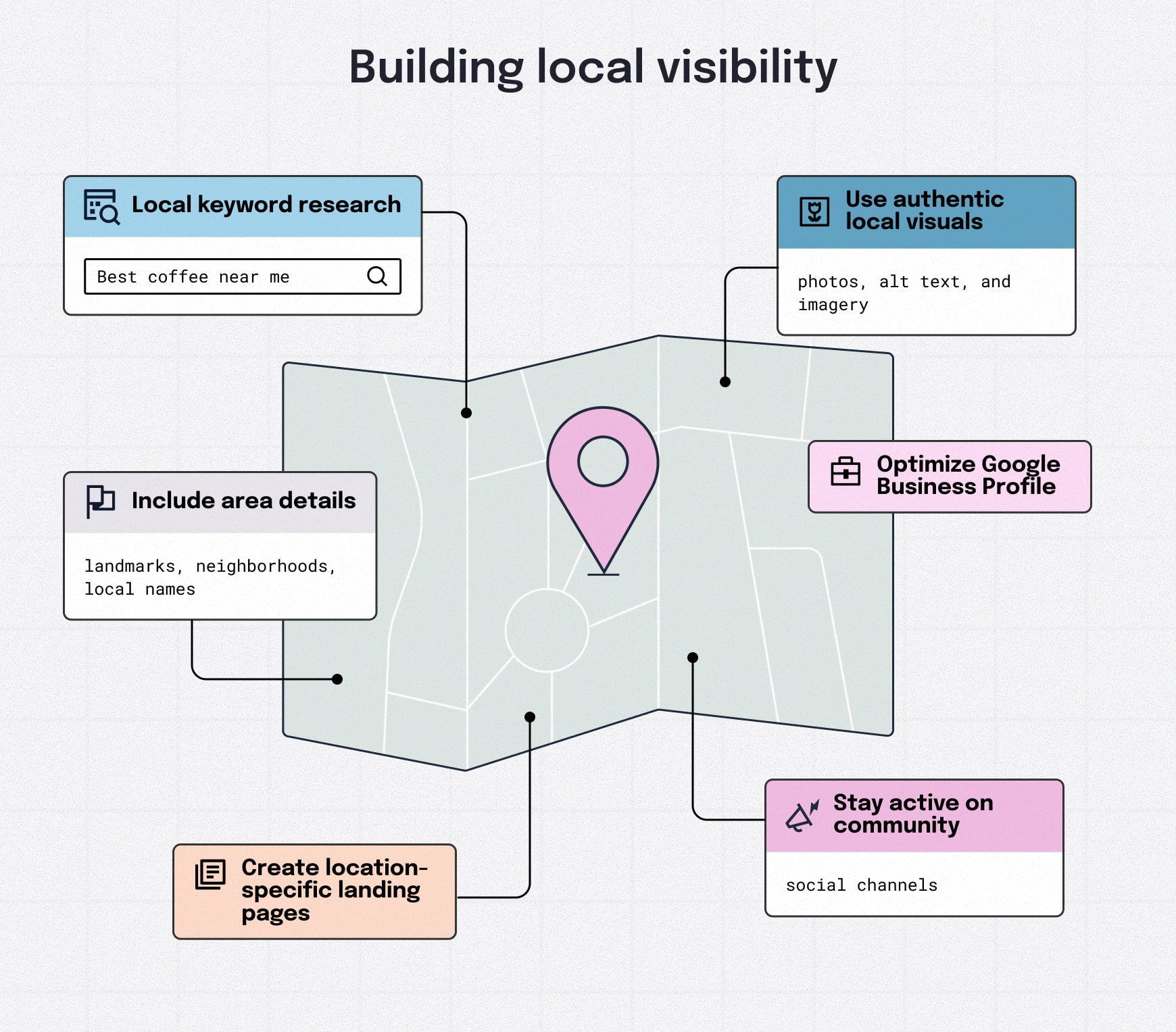
This is the type of SEO content that connects your content marketing strategy to a specific audience in a defined location.
Why local SEO content matters
If your business serves certain regions, cities or even neighborhoods, localized SEO content helps your website appear in local search results and on the coveted map listings.
- Drives local visibility. Tailored content for SEO ensures your business ranks for searches in your area and appears on the first page of Google Maps results
- Builds community trust. Highlighting local stories, customers or events strengthens relevance with nearby audiences.
- Boosts conversions. Localized landing pages and product pages help turn visitors into customers by aligning with intent to purchase.
- Improves rankings. When optimized with local keywords and context, local content can outperform generic blog posts for regional searches.
How to optimize content for local SEO
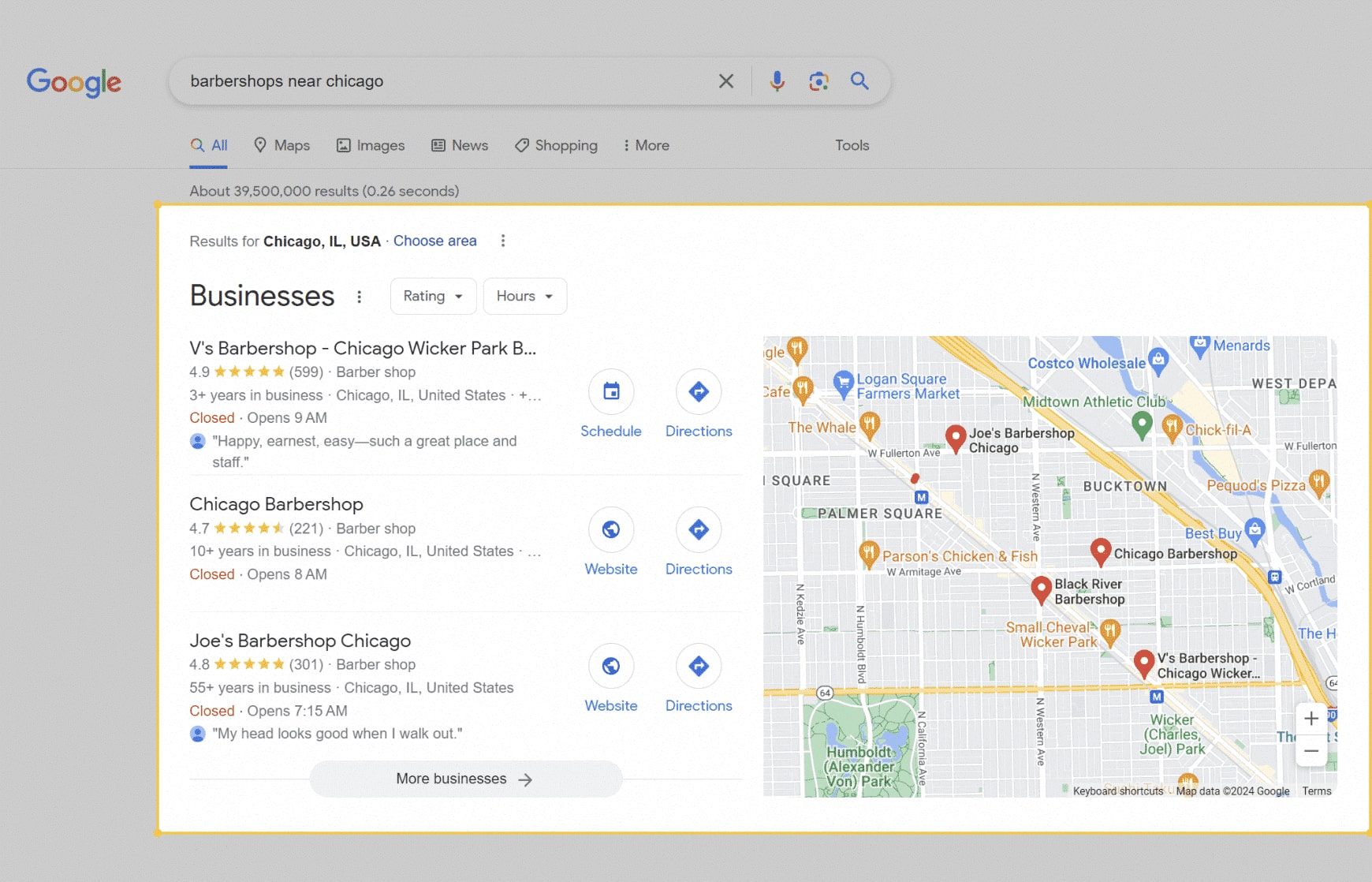
Local SEO strategy is focused on increasing local traffic, visibility and brand recognition. Get going like this:
- Start with keyword research. Identify local and industry-specific phrases your target audience uses, including neighborhood names or service areas.
- Add local detail. Mention landmarks, nearby attractions or local customer examples to build authenticity.
- Optimize key pages. Create landing pages for each city, state or service region, and link them to related pillar pages or other posts.
- Leverage your Google Business Profile. Keep it updated with accurate information, photos and posts — and encourage reviews. A complete profile builds trust and improves your visibility in search results and Maps.
- Use visuals. Add images with local alt text, schema markup and location data for better indexing.
- Stay active locally. Post about local events or share updates through social media like Instagram posts to increase engagement and reach.
Put your SEO content strategy into action
Knowing the right types of SEO content to use and how helps you reach the right people, generate more leads and rank higher in the search results.
More important than the rankings, though, is to stay focused on creating content that’s valuable, readable and which actually resonates with your target audience — not just search engines. Mix formats, match them to each funnel stage and keep optimizing as you learn what performs best.
As you embark on your website content planning journey, use Slickplan to keep all your content creation organized.
Plan smarter content with Slickplan
A collaborative workspace to handle all your content needs. Plan, gather and create together.
Frequently asked questions
What is common content in SEO?
Some of the best types of content for SEO include well-optimized blog posts, informative articles, engaging videos, visually appealing infographics and user-friendly product pages. Diversifying content formats caters to varied audience preferences and enhances overall search engine visibility.
What are the 3 types of SEO?
The three types of SEO are on-page SEO, off-page SEO, and technical SEO. On-page focuses on content optimization, off-page on external factors and technical on site structure.
What are the benefits of long-form content?
Long-form content provides in-depth information, enhances authority and thought leadership as well as boosts SEO by attracting quality backlinks. It also engages readers, improves user experience and increases dwell time.
Should I use different types of SEO content?
Yes, using different types of SEO content is beneficial. Varied content, like blog posts, videos and infographics, caters to wide audience preferences and helps optimize for different search engine ranking factors, improving overall SEO performance.






 X
X
